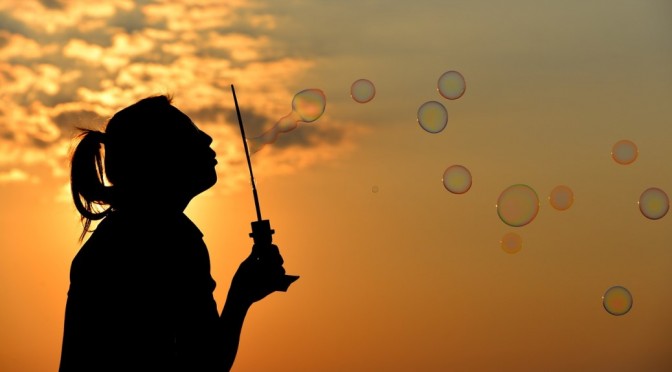International Women’s Day 2016 Theme
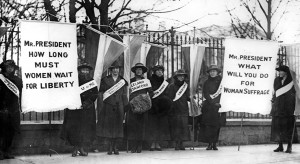
The theme for the still necessary International Women’s Day (IWD) this year is “Planet 50-50 by 2030: Step It Up for Gender Equality“, or more simply, gender parity. An IWD was called for as long ago as 1910 by Clara Zetkin and 100 women from 17 countries at a conference in Denmark. It was celebrated for the first time in 1911 and by 1913 it was recognised in many places, including Russia, the same year it moved to its current date of 8 March. In 1908, 15,000 women demonstrated in New York for equal rights, and in 1909 held the first National Woman’s Day. Yet after more than a century, by some accounts, we are still at least a 100 years away from equality:
“The World Economic Forum predicted in 2014 that it would take until 2095 to achieve global gender parity. Then one year later in 2015, they estimated that a slowdown in the already glacial pace of progress meant the gender gap wouldn’t close entirely until 2133.” – International Women’s Day
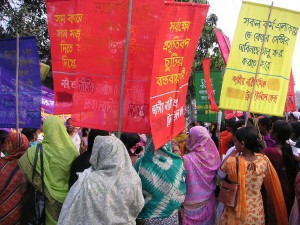
Recalling last year’s theme of “Make it Happen” and this year’s “Pledge for Parity” it seems we are still struggling to accelerate progress and in some instances we are slowing down.
Meanwhile UN Secretary-General Ban Ki-moon argued in a statement on IWD for positivity because of past change:
“We have shattered so many glass ceilings we created a carpet of shards. Now we are sweeping away the assumptions and bias of the past so women can advance across new frontiers” – UN Secretary-General Ban Ki-moon
Great, but progress is still slow, hardly “sweeping away”, and those campaigning for change don’t want to wait another 100 years for parity in education, employment, democracy, legal rights, sport, representation in the media etc.
Women in Education
A timeline of women’s history – or rather some choice and interesting examples, as it does little justice to many forgotten women – includes Mexico’s Sor Juana Inés de la Cruz who in 1691 fought for women’s education, saying:
“one can perfectly well philosophize while cooking supper.”
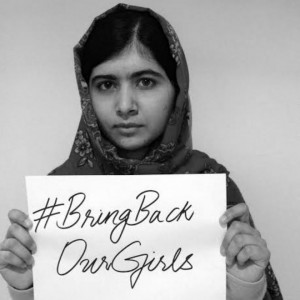
We wouldn’t even accept that comment now, 400 years later, regarding it as sexist to assume that she should be the one to be cooking the supper. Yet education parity hasn’t arrived either with 50% more boys than girls in school in sub-Saharan Africa and the well-publicised situation in NW Pakistan brought to the fore by the shooting of Malala Yousafzai in 2012. Men are twice as likely to be literate as women in Pakistan and there are three times as many schools for boys as those for girls with twice as many male places.
Money Talks
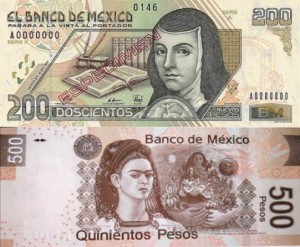
Sor Juana Inés de la Cruz ended up on Mexico’s currency, as does Frida Kahlo on another peso note, and we all know that money talks, yet barely a dozen nations have historical female figures on their national printed currency.
Even Syria, much in the news, has third century Queen Zenobia on a high value note. The Ukrainian 200 Hryvnia note features women’s rights activist Larysa Petrivna Kosach-Kvitka (Lesya Ukrainka), a writer and poet who died in 1913. Israel and Turkey also have female figures on current or planned notes, whilst Argentina has Eva Perón.
The UK has its female head of state on the front of every note and on the reverse of others Florence Nightingale, Elizabeth Fry, and soon, Jane Austen will be added to their number. The United States will only have a woman on its banknotes in 2020.
Unpaid and Low Paid Working Women
The UN 2015 Human Development Report which monitors the gender-related aspects of empowerment (GEM) and development (GDI) says that whilst 47% of women are in paid employment and 72% of men, they nonetheless contribute 52% of global hours worked to men’s 42%, indicating high rates of unpaid labour. Socio-cultural reasons for this and expectation within marriage and motherhood, explain some of this, but women are still often expected to do more for less.
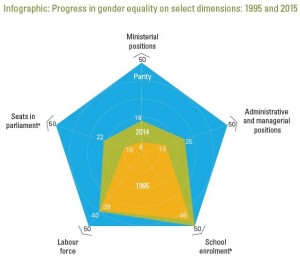
A UNDP infographic shows how we are approaching parity in education, but that workforce equality and executive jobs are lagging behind, and whilst female representation in parliaments is growing, ministerial positions for women are still rare. The blue polygon represents the aims of parity on 5 axes. The green is where we are at, and the orange where we were two decades ago in 1995. Even in the UK there are more male MPs now than the total number of female MPs ever.
Sexual Violence
Far from ending sexual violence after more than a century of IWD activism, in some places it seems to be on the rise. In areas controlled by Islamic State (ISIL) and similar groups like Boko Haram or Al Shabaab, sex-based violence is used as part of military control and conquest. Forced marriage, gang rape, mutilations and punishments are all carried out in the name of jihadist terror.
No such thing as a Safe Space for Women?
A far cry from Africa and the Middle East lie the streets of Britain on an average Friday night or even the office workplace, on any given day. Sexism at work, inappropriate banter or touching, still occur – 30% of British men admit to being sexist. The risk of being groped by a stranger in public for a young woman is nearly 1-in-2 with a majority wishing members of the public had intervened to stop it happening. The End Violence Against Women campaign report that 85% of women-under-25 had received unwanted sexualised attention and 45% sexual touching, in public. Nine times out of ten, nobody helps.
Woman in Sport
A Women in Football survey of women working in the sport reported that 2-in-3 women were the butt of sexist jokes and comments, 1-in-4 were bullied and 1-in-6 experienced actual sexual harassment. These figures are a rise on the last survey, 2 years ago. Perhaps, this could be accounted for by improved reporting and confidence to complain, or it could actually be getting worse.
Feminism is for all Women
Women attacking women is not unknown either, whether workplace bullying, school gangs, or policing each other’s feminism. Feminisms, rather, for a great range of feminist labels and ideologies now exist and needlessly attack each other rather than the societal systems that oppress them. Some avoid the term feminist altogether in protest, but when asked what they believe in, the basic principles of feminism are still held up. Namely, equal economic, personal, political, and social rights for women.
Feminism is for Men too
Whether you’re a feminist or an egalitarian, equality is what matters. Indeed, there is also an International Men’s Day, on 19 November during ‘Movember’ month. Joining in bringing disadvantaged women up to the opportunities, levels and ceilings, currently experienced by most men, brings equality and benefit for all. That is why we need International Women’s Day and campaigns against gender disparity in places where the scales of power are tipped in favour of patriarchal and often religious, political and economic establishment privilege. Men’s Day is a time to focus on their health and other disadvantages, but today in Women’s History Month is a day to focus on girls and women.
